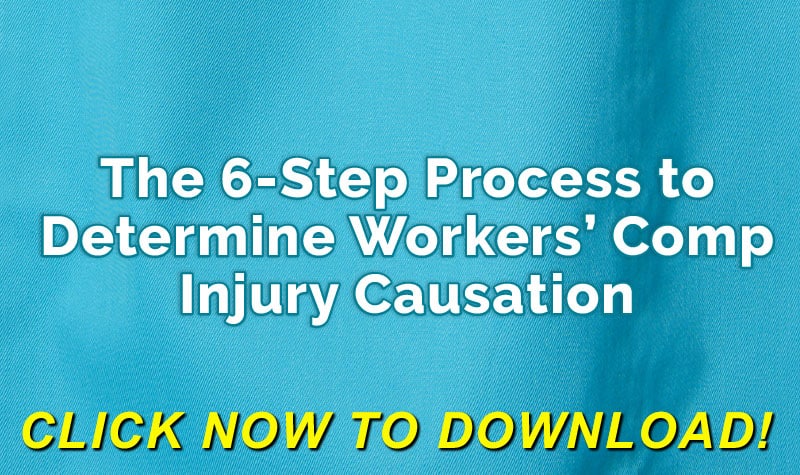One of the biggest quandaries of the workers’ compensation adjuster is facing how to deal with the severely injured employee, now addicted to opioids or opiates, better known as narcotics, as a result of injury treatment.
Doctors often prescribed narcotics for the acute pain an employee suffers when first injured. Other medications are often ineffective for acute pain and the quickest and easiest way to mitigate the pain is through the use of narcotics. Doctors also often rely on narcotics for the employee with a chronic pain condition.
Narcotics are commonly prescribed for short-term relief of pain. However, their use long term may create problems for the employee. A study by the Yale School of Medicine found 24% of the employees with chronic back pain who were given narcotics developed a narcotics abuse problem. The study also reflected narcotics are effective for the short term (less than four months) but their long-term effectiveness was inconclusive.
The excessive use of narcotics not only creates a dangerous addiction problem for the employee, but also often results in poor return to work success, extended time off work, and increased cost of the workers’ comp claim.
According to a 2009 study published by the National Council on Compensation Insurance (NCCI) the cost of narcotics is approximately 25% of the total medication cost in workers’ compensation claims. As the claim gets older, the percentage of the drug cost related to narcotics grows, especially for back injury claims. The NCCI study confirmed the heavy use of narcotics in the treatment of workers’ comp injuries results in addiction and persistent use lasting for years.
The overuse of narcotics in the treatment of workers’ compensation injuries has been a problem for years in the workers’ comp industry, and the problem continues to grow. The workers’ comp adjusters, the nurse case managers, and other concerned insurance professional have all dealt with the problem of narcotic abuse. The best overall approach is to work with the doctors to promote the medically necessary and responsible use of narcotics.
Several studies suggest what is the best way to handle the use of narcotics in the treatment of workers’ comp injuries. The guidelines being used now by most doctors stress the lowest possible dosages and emphasizing psychological assessments before prescribing narcotics. While most doctors do prescribe the lowest possible dosage with their initial prescription given to the employee, most doctors do not take the time to perform a psychological assessment of the injured employee before prescribing narcotics, especially for the first visit by an injured employee in obvious pain.
One approach to the problem of narcotic addiction is for the doctors to establish a specific treatment plan with the start of narcotics. The doctor and the employee agree to the treatment plan and the amount of narcotics the employee will use. The doctor’s office performs either schedule or random urinalysis to verify compliance with the dosages specified in the treatment plan. A drug test let’s the doctor test to make sure the employee is in fact using the drugs prescribed, not selling them on the street. When a person who has been prescribed opiods tests negative the doctor must wonder why the patient is not using the drugs, and whether those drugs have perhaps been used for illegal purposes.
Some doctors concerned about the potential for narcotic addiction prescribe physical therapy and aerobic exercises as ways to ease the pain an employee is suffering. While this approach does not have the fast acting results employees often want (and get with narcotics), the side effects are beneficial to the employee. There ARE legitimate purposes for these therapies; many employers feel these therapies are “luxurious” over-the-top fun-time for employees which is normally not the case.
Due to the problems associated with narcotic use, some doctors are switching to prescribing a non-narcotic painkiller, Lidoderm delivered via a patch. The problem with Lidoderm is the cost. It is more expensive than the commonly used narcotics — OxyContin, Hydrocodone, and Oxycodone. In the long run, however, it can be more cost effective then dealing with the employee with a narcotic addiction or an employee who is still in pain but has sold their medication for cash.
Another non-narcotic painkiller doctors may use is Celebrex, a nonsteroidal anti-inflammatory, but also costly. With Lidoderm and Celebrex, it is difficult for a patient to switch to them if they already started using narcotics. The employee will claim Lidoderm and Celebrex are ineffective because the patient starts experiencing withdrawal after switching to the non-narcotic painkillers. Neurofeedback can also be effective for treating pain, according to David Dubin, M.D. Neurofeedback helps the patient learn to self-regulate pain.
If the employee’s pain is not too severe, it can often be treated with over the counter medications like aspirin, ibuprofen, Aleve,Tylenol. The issue encountered with over the counter medications is the belief by many employees that their pain is unusual and they need something stronger to control it. (workersxzcompxzkit)
There is no easy solution to the problem of the overuse of narcotics in the treatment of workers’ comp claims. The nurse case manager and the workers’ comp adjuster need to promote the use of a specific treatment plan with a scheduled end date for the use of narcotics. The nurse case manager and the adjuster also need to encourage the switch from narcotics to non-narcotic painkillers, combined with physical therapy where appropriate, as early in the treatment process as possible. It is imperative for the adjuster and nurse case manager intervene as much as possible to prevent narcotics addiction.
Author Rebecca Shafer, J.D., President, Amaxx Risks Solutions, Inc. has worked successfully for 20 years with many industries to reduce Workers’ Compensation costs, including airlines, healthcare, transportation, printing/publishing, pharmaceuticals, retail, hospitality and manufacturing. Contact: RShafer@ReduceYourWorkersComp.com or 860-553-6604.
FREE WC IQ Test: http://www.workerscompkit.com/intro/
WC Books: http://www.reduceyourworkerscomp.com/workers-comp-books-manuals.php
WC Calculator: http://www.reduceyourworkerscomp.com/calculator.php
Do not use this information without independent verification. All state laws vary. You should consult with your insurance broker or agent about workers’ comp issues.
©2010 Amaxx Risk Solutions, Inc. All rights reserved under International Copyright Law. If you would like permission to reprint this material, contact Info@WorkersCompKit.com
















